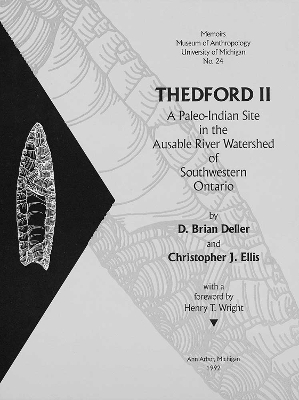Memoirs
2 total works
A detailed and profusely illustrated analysis of material recovered from this Early Paleo-Indian Parkhill site.
This monograph provides a detailed description and analysis of the Crowfield Early (fluted point associated) Paleoindian site, excavated in 1981 and 1982. The site has a small concentration of unheated Paleoindian tools and debris typical of most campsites, and that material clusters around a subsoil concentration of heated lithic debris (called Feature #2) that may be a simple hearth remnant although other interpretations are possible. However, a major discovery was another plow-truncated feature, called Feature #1. This feature, unique in the annals of Paleoindian studies, consisted of a pit that contained 182 heat-fractured Paleoindian stone artifacts, including 30 fluted bifaces, as well as a range of other bifacial and unifacial tools, preforms and blanks. The objects represent a purposeful artifact cache that had been emplaced in the pit carefully sorted into different tool classes and types and then had been deliberately destroyed or burned, suggesting the feature activities involved sacred ritual. This feature represents the best evidence for Early Paleoindian sacred ritual activities in all of eastern North America. Also, the feature assemblage closely approximates an individual's transported, functioning tool kit, as contrasted with the surplus, seasonal and insurance gear, or offerings, that dominate the other known Paleoindian caches. As a functioning stone tool kit it provides a unique opportunity to develop and begin testing ideas about how Paleoindian knappers organized their technology.
This volume will obviously be of much interest to Paleoindian scholars, especially since it allows one to begin considering aspects of Paleoindian lives that go beyond simple material and economic concerns. Of significance, the investigators develop more general models with explicit archaeological test implications that should be of value to a wide range of archaeologists interested in understanding the significance of variability in caching behavior and cache contents and in documenting how knappers in hunting and gathering societies transported and organized/managed their stone tool kits.
This volume will obviously be of much interest to Paleoindian scholars, especially since it allows one to begin considering aspects of Paleoindian lives that go beyond simple material and economic concerns. Of significance, the investigators develop more general models with explicit archaeological test implications that should be of value to a wide range of archaeologists interested in understanding the significance of variability in caching behavior and cache contents and in documenting how knappers in hunting and gathering societies transported and organized/managed their stone tool kits.

